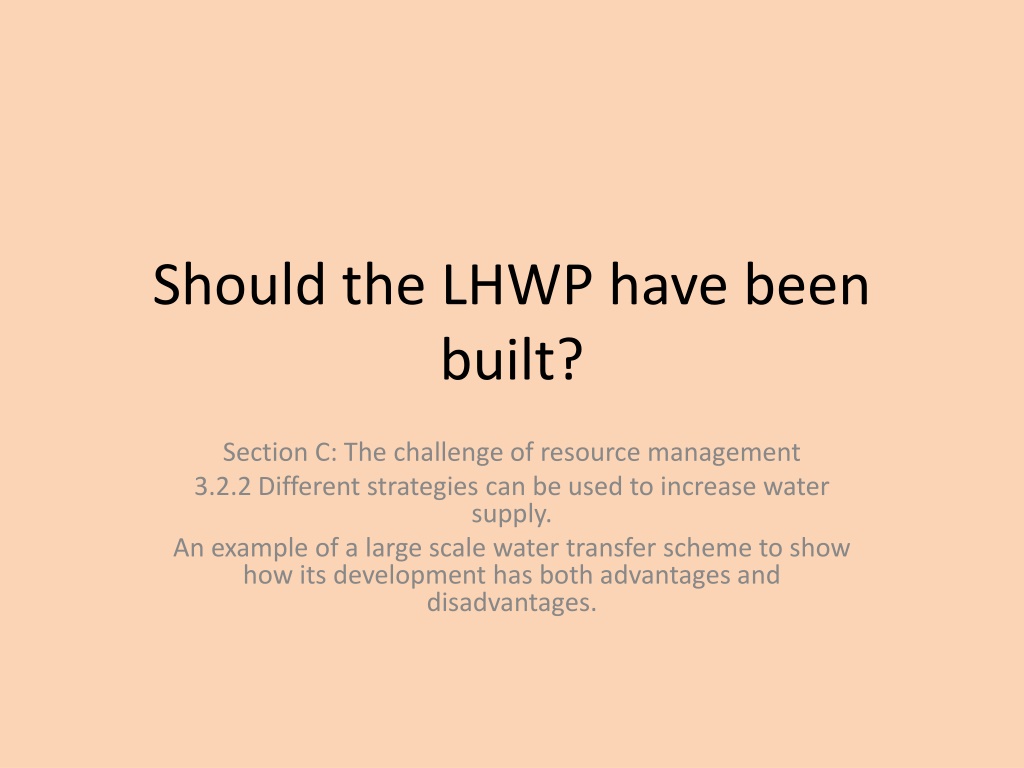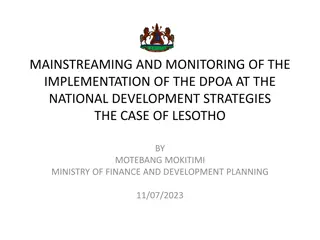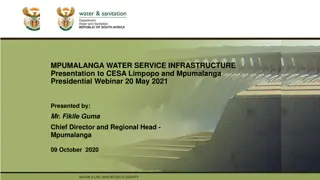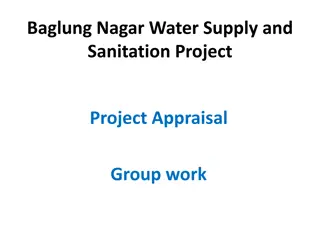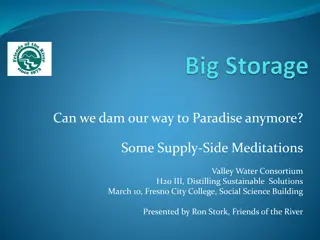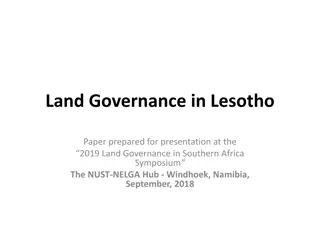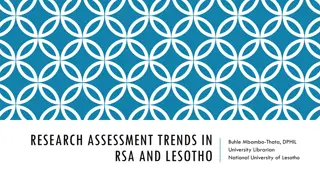Contemplating the Lesotho Highlands Water Project
Exploring the decision-making process behind the construction of the LHWP and its impact on resource management. Through climate analysis and consideration of water transfer schemes, the advantages and disadvantages of such large-scale projects are examined, raising questions about their applicability in different regions.
Download Presentation

Please find below an Image/Link to download the presentation.
The content on the website is provided AS IS for your information and personal use only. It may not be sold, licensed, or shared on other websites without obtaining consent from the author. Download presentation by click this link. If you encounter any issues during the download, it is possible that the publisher has removed the file from their server.
E N D
Presentation Transcript
Should the LHWP have been built? Section C: The challenge of resource management 3.2.2 Different strategies can be used to increase water supply. An example of a large scale water transfer scheme to show how its development has both advantages and disadvantages.
Should the LHWP have been built? Starter What enquiry questions could you ask about this scene?
Should the LHWP have been built? Objectives 1. To be able to interpret and describe a climate graph. 2. To be able to compare the climate of two regions. 3. To be able to explain the factors that lead to a difference in climate.
Should the LHWP have been built? Task This is a climate graph for Johannesburg in South Africa. 1. Describe the climate 2. What problems might they face May September? Challenge How and why is this climate graph different to one for the UK?
Should the LHWP have been built? Task Describe the pattern of rainfall in Southern Africa. Can you suggest reasons for this pattern?
Should the LHWP have been built? Task Watch this short clip and use the information in it along with the diagram below to explain why Lesotho has a higher rainfall than Free State in South Africa.
Should the LHWP have been built? Task Where do you think this dam might have been built? What purpose might it have? What positive and negative impacts may there have been as a result?
Should the LHWP have been built? Plenary Do you think a scheme like this would be appropriate in the UK? Be prepared to justify your answer.
Should the LHWP have been built? Section C: The challenge of resource management 3.2.2 Different strategies can be used to increase water supply. An example of a large scale water transfer scheme to show how its development has both advantages and disadvantages.
Should the LHWP have been built? Objectives 1. To be able to interpret data and use it to describe differences in an region. 2. To be able to discuss the sustainability of a large scale scheme. 3. To be able to evaluate the impacts of a scheme.
Should the LHWP have been built? Starter What information would you use to contrast development in two countries?
Should the LHWP have been built? Starter What information would you use to contrast development in two countries? Create a table using the data at the back of the atlas to compare development in Lesotho and South Africa.
Should the LHWP have been built? Task Read the information on the LHWP at the start of page 248 and use it to describe the scheme. Watch these clips and start to make notes on the benefits and problems with the scheme Clip One Clip Two
Should the LHWP have been built? Task Use your notes from the videos along with the information in the book to complete this table. Cost Economic Benefit Social Environmental
Should the LHWP have been built? Task You have been asked to write an evaluation of the LHWP for the Lesotho and South African governments. Should the LHWP have been built? Challenge Try to include references to; Comparisons in climate, Development data, References to sustainability.
Should the LHWP have been built? Plenary Write the answer to one of your enquiry questions on your whiteboard. The rest of the class are going to try and guess what question it is the answer to.
